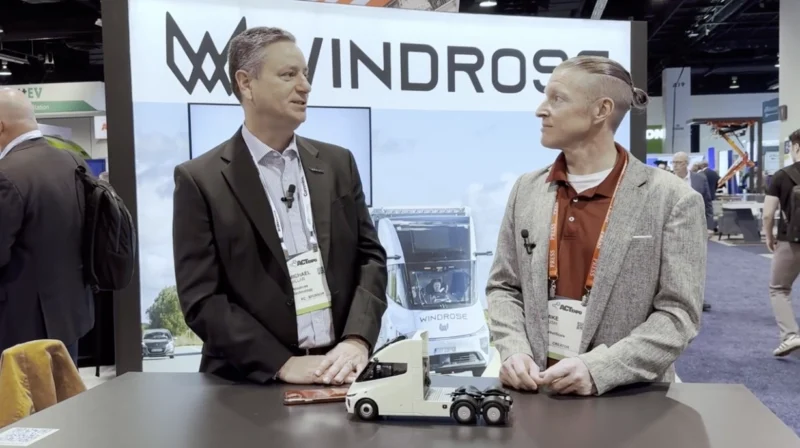Plug and Play: The Obstacles and Opportunities for Electric Vehicle Charging
People have been debating the existence and potential impact of global warming for decades. Despite this fact and amid ever-increasing evidence, little has been done to change the trajectory of the future when it comes to getting electric vehicles on the road.
However, the rise in natural disasters, eroding seacoasts, and the fact that experts estimate species are going extinct at a rate that is anywhere “between 1,000 and 10,000 times higher than the natural extinction rate” has led to the general acceptance that not only is global warming real, but we need to do something about it now if we want to protect the quality of life worldwide.
In the US, Canada, and Europe, governments are working with businesses to get more electric vehicles (EVs) on the road to replace gas-powered vehicles. To do this, countries need more charging stations and charging station alternatives, car manufacturers need to build more EVs, and energy providers need to establish an infrastructure that can support increasing demands on existing electrical grids.
The Goal – Achieve Carbon Neutrality by 2050
In December 2021, President Biden signed an executive order that aims to have the U.S. federal government cut carbon emissions by 65% by 2030, and be completely carbon neutral by 2050. But what does this mean?
“Carbon neutral means having a balance between emitting carbon and absorbing carbon from the atmosphere in carbon sinks…. This can be done through investment in renewable energy and achieving energy efficiency and developing clean technologies,” explained Ying Xie, PhD, Professor in Supply Chain Management at Anglia Ruskin University.
Although the Biden administration plans include all government facilities and resources, there is a provision that aims to replace the government’s “fleet of 600,000 cars and trucks with electric vehicles.”
These goals are extending to cities and facilities throughout the U.S. At the Dallas-Fort Worth Airport, they’ve “shifted towards purchasing 100% renewable electricity for our needs. And as we transition to electric vehicles, we want to make sure there is adequate supply to meet those needs,” said Robert Horton, VP of Environmental Affairs at DFW Airport.
And according to John Murray, Head of EVs at Delta-EE, the goals stretch even further in the United Kingdom. As of 2030, only hybrid or fully electric vehicles will be available for sale with fully electric vehicles being the only option as of 2035. “It’s really important that we get to a point where by 2035 we’re only selling fully electric cars if we’re serious about a 2050 net zero target because cars have got typically a 12 or even 15-year life span, could be even longer than that,” Murray noted.
EV Charging Solutions Critical to Carbon Neutral Agenda
While demand for EVs continues to rise, the infrastructure needed to support carbon neutral goals is simply non-existent at present. As of May 2022, the U.S. had just over 48K EV charging stations in comparison to 145K gas stations throughout the country. The lack of charging stations has become a major obstacle to getting more EVs on the road.
“Because the new electric vehicles have a decent battery pack with 200-300 miles of range, we don’t see much range anxiety anymore. It’s more about charge anxiety. If a driver often arrives at the sites and the charging station is unavailable or it’s broken. The worst-case scenario, they have to tow their vehicle to the next charging station,” said Matthieu Loos, Senior Technical Advisor at FLO.
The Biden administration is working to address this problem by committing almost $5 billion to build a network of EV charging stations across the country focusing on the Interstate Highway System. This will certainly help ease charging anxiety although work will also need to be done in rural areas to ensure drivers do not end up in dead zones with no access to a charging station.
Charging Station Accessibility – From Work to Home to Food Shopping
“The progress to net zero vehicles and zero emission vehicles is absolutely mind-blowing now. From around five years ago in the United Kingdom less than 1% of new vehicles being sold were purely battery electric vehicles to now, in 2022 the two best-selling cars in the whole marketplace are the Tesla Model Y and the Tesla Model 3 which are battery electric, pure electric vehicles,” said Tom Stacey, Deputy Head of School at Anglia Ruskin University.
Thus, charging stations need to become convenient, and easily accessible. When cities are designing EV infrastructure strategies, they need to consider location very carefully. Not only do stations need to be in busy locations and very visible but they also need to be supported by the existing power grid.
“I think the first thing to continue to minimize range anxiety and advice for different federal or city or municipalities that are looking to continue to develop their EV infrastructure is to look at those areas that are close to freeways or those thoroughfares where there are a lot of traffic or a lot of transportation,” said Emil Abdelshehid, MBA, PMP, P.E., Power Engineering Manager at Los Angeles Dept. of Water and Power.
Lauren Rounds, Interim External Communications and Marketing Manager at the Dept of Aviation, Dallas-Love Field agreed with Abdelshehid. “It is very important to invest in EV infrastructure such as EV charging stations to keep up with the future electrification demands that the city, the state, and the country is experiencing. Both the city of Dallas and the Department of Aviation are taking actions to improve infrastructure availability. For instance, at the airport, the Department of Aviation are currently developing an electric vehicle master plan intended to serve as a transitional guide towards fleet electrification,” said Rounds.
EVs Rapid Adoption Demands Out-of-the-Box Thinking
While charging stations are top of mind in supporting EVs and carbon neutrality, they are not the only solution. “The whole psychology behind how we put energy into our car needs to be rethought. The opportunity to be able to put electricity into a car is not restricted to the same problems that a petrol car has in as much as you’ve got to go to a special place to get it,” said Stuart McBain, Managing Director at Stuart McBain Ltd.
One solution is to increase the ability of consumers to charge at home and continue to develop the technology to charge vehicles in motion. Everything from solar panels to wireless static and dynamic charging, as well as battery swapping, are on the table.
Additionally, charging stations don’t necessarily need to be located at traditional gas stations. They can be installed at convenient locations such as grocery stores, mall parking lots, and near movie theaters. This way an EV driver can charge their vehicle while going about the business of daily life.
Regardless of the solutions implemented to support the goal of being carbon neutral by 2050, the need to reduce gas-powered vehicles and replace them with environmentally friendly EVs is clear. Our quality of life, quite literally, depends on it.









